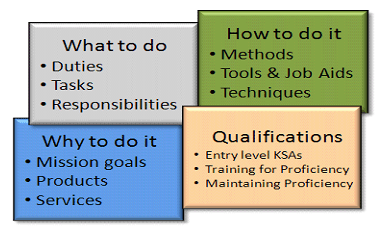HRIS: An Evaluation of its Cost and Benefits
April 3, 2025
 HRIS: An Evaluation of its Cost and Benefits
HRIS: An Evaluation of its Cost and Benefits
Human Resource Information System (HRIS) often described as Human Resource Management System, in the present scenario can serve as a crucial tool in providing a competitive advantage to the organizations. It involves measurability, better management of data and information, equally provide scope for measurement of key HR practices and its outcomes on employee productivity as…
 Training & Development and HRIS Applications
Training & Development and HRIS Applications
HRIS is a systematic process of compiling different information for easily accessing them further. HRIS helps in training and development issues within a business. It facilitates performance evaluation of an employee understanding proper training methods, utilizing the knowledge imparted to employees in an accessible manner. Training and Development – Strategic Implications and Learning Organization The…
 Systems Considerations in the Design of HRIS
Systems Considerations in the Design of HRIS
For implementing any Human Resource Information System (HRIS) project successfully, the system design requirements should be given utmost importance and it must have scope for customizations as per the requirements of the end users. The system should have various inbuilt provisions and be developed by carefully analyzing the end users/customers’ requirements and the technicalities involved…
A Job can be described as a group of tasks which is assigned to the individual employees for ensuring achievement of the organizational goals. When this job is analyzed in terms of determination of the skills, duties and knowledge required for completion of tasks, it is regarded as Job analysis. In the words of Geisler (2006), the entire process of Human Resource Planning essentially involve four crucial aspects in it:
A sound HRP process in an organization must be strategically aligned with the overall corporate strategy and essentially depends on the availability of a robust HRIS for making accurate projections regarding the manpower requirements and availability of information readily regarding crucial HR parameters.
Job Analysis involves gathering information and analysis of information of crucial information about a job. In this analysis judgements are made on the data collected of a job. Job Analysis involves both Job Description and Job Specification, which includes an assessment of the nature of the job as well as the knowledge, skills and attitude of the jobholder.
In other words, Job Description provides details regarding the content of the job in a written format and Job specification is a written record of the qualities and qualifications which a Jobholder should be having for handling a job.

Source: http://hsimed.gtri.gatech.edu/hsi_info/hsi_methods_job.php
The job analysis is useful in developing selection, training, and performance evaluation. Job analysis is the process of studying and collecting information about the responsibilities and operations of a given job. Specifically, job analysis involves the steps:
Human resources planning can be described as a process of ascertaining the manpower requirements of an organization which should be aligned with the strategic goals of the organization. According to E.W. Vetter, human resource planning is “the process by which a management determines how an organization should make from its current manpower position to its desired manpower position”. Some of the features are:
Planning is the first step for determining the success of any strategic initiative and ensuring achievement of pre-defined goals as it establishes a road map for realization of several action plans. Effective planning begins with information gathering, defining or establishing objectives and implementing sound decisions for ensuring achievement of organizational goals. HR Planning answers the following questions of number of employees in the organization, skills and knowledge of the employees a company possesses, proper utilization of the resources and motivational tools required for the employees.
Human Resources Practitioners who plan HR program assist the organization to manage its employees strategically by facilitating the career planning of the employees and achieving the objectives as well. In the present scenario of fast changing business environment which is characterized by more volatility, cut throat competition and global approach, organizations have started to give increasing importance to effective Human Resource Planning for gaining a competitive edge through appointment of the right talent in the right position. Not only in Staffing, but HRP plays a crucial role in the areas of Training Development, Compensation Determination as well as planning and implementing various motivational initiatives for the employees. In the era of Strategic Alliances, Globalization of economies, Mergers and Acquisitions, HRP can play a very critical role in determining organization’s competitiveness.
Short Term Human Resource Planning is essentially derived from the long term human resource planning, which is usually done for a period of 1 year. It contributes towards fulfillment of long term objectives and one of the key issues involved in short term Hunan Resource Planning is matching of available human resources with the existing jobs. Long Term Human Resource Planning is essentially done for a period of five years or sometimes beyond it.
Availability of a robust HRIS in an organization can play a crucial role in determining the effectiveness of Human Resource Planning in an organization. A well-developed HRIS, can enable availability of crucial information or data regarding the human resources and accordingly result in accurate projections for the future requirements.
Your email address will not be published. Required fields are marked *